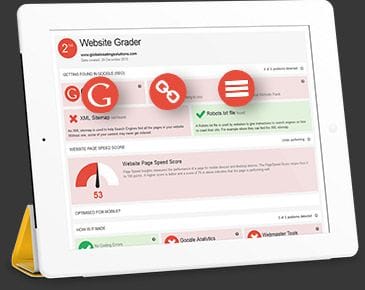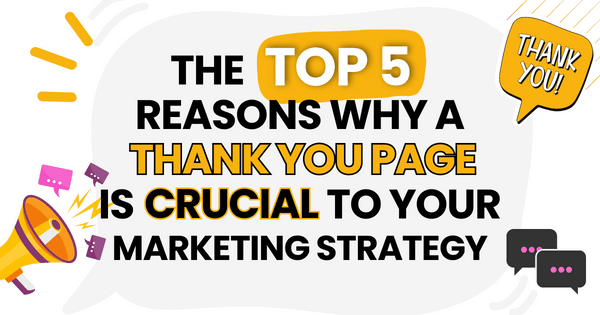Grammar Guru: 11 Grammar Mistakes Prevalent in Web Copy
)
To be fair, the English language is one of the most complex to fully grasp, with more rules and regulations than the Iranian nuclear program. Phrases that sound correct in your head could translate into a mess when written down, assuming you realize you're making a mistake in the first place.
Simple grammatical errors are easy slip by an editor's eye (especially if you're your own editor, which you shouldn't be). If you or your editor are plowing through waves of web copy, that rapid editing pace will have your eyes skimming over a lot of errors, with your mind filling in the blanks or missing words.
You probably didn't even catch the mistake in the preceding paragraph, did you?
Here are 11 of the most prevalent grammar mistakes and broken rules we regularly come across when auditing clients' sites, or revising and optimizing SEO web content.1. They're vs. Their vs. There.
We had to start with this grammar classic, the ultimate barometer for people to gauge your intelligence. Misuse of the they're / their / there is today's litmus test as to whether your grammar is above or below the Mendoza line.
That might sound a bit harsh, but see if your copy is taken seriously with blatant mishandling of this trifecta.They're is a simple contraction of 'they are'; to see if it makes sense in the context of your sentence, simply write out the long form and determine its grammatical sense. Their refers to something in possession of a group. There simply denotes a place or location.
The Guru's Example:They're going to hate going there - their fish tacos are the worst!2. It's vs. Its.
Another regular grammatical oversight when writing web content, that little apostrophe makes all the difference.
It's is a contraction of 'it is'; its is a possessive. The former is what trips people up, as the proceeding 's usually indicates something as possessive, while here it represents a contraction.The Guru's Example:It's raining hard in the city and its suburbs.
3. Loose-Ended Comparisons.
This falls under the 'writing clichés people use because they saw someone else use it' category. Copywriters or web content creators, especially those working in advertising, will try to sell you, often with a comparison.
But, a lot of these are loose-ended comparisons. For example:
Bloomtools' baguettes are softer, tastier, and fresher.So these baguettes are softer, tastier, and fresher...than what? Are the baguettes being compared to rival buns? Other foods? Inedible objects?
If you're claiming something is better than another thing by comparison, make sure you mention what the latter thing is. Otherwise, it's a baseless comparison that proves nothing to readers.4. Passive vs. Active Voice.
We generally recommend our clients to employ an active voice in their website copy. It's punchier, more lively, and isn't bogged down by language required in passive context.
Any sentence relating to an object or subject that you're talking about, or something that receives an action is susceptible to passive voice. Passive voice happens when the object of the sentence is put at the start of the sentence, instead of the end. When your voice is passive, the writing can become unclear, and is always weak.Take note of the paragraph above - see how passive that voice is? Notice how the language is slow, taking forever to get to the point. Now check out how the next paragraph, written in an active tone, differs in comparison:
Passive voice occurs when the object is the subject of a sentence. The object of the sentence comes at the end, usually following a verb. Passive writing isn't as clear as active writing - an active voice is strong, punchy, and to the point.Hopefully these examples will encourage your active voice, as it'll tighten up your writing by default, too.
5. Weak, Impartial Voice.
Following the rules of passive and active voice, a weak and impartial voice is a death sentence in internet marketing. Where short, punchy, and confident reigns supreme, an impartial voice shows apprehensiveness, unsureness, and by association, a dearth of credibility or expertise.
No one wants the hot plate that 'might be the best you've ever cooked soup on'. We want the hot plate that's 'the best you've ever cooked soup on'. That 'might be' qualifier makes the product and its maker unsure if it holds up to the claim. Let the consumer be the judge of that!
We're not saying to straight-up speak lies, but if you're claiming your product or service is 'amazing', then say 'amazing'. Don't qualify it with 'you might find it', or 'it could be' - tell them in a direct, confident voice.6. Dangling Modifiers.
A dangling modifier isn't a device to attach to your hockey stick that'll give you hands like Pavel Datsyuk (sorry, Canadian hockey joke).
It's when one writes a descriptive phrase, but not about the noun that directly follows it.After dropping for months, Joe devised a new strategy to increase ROI.
See the ambiguity? What's dropping here Joe, or the ROI? One could assume it's the ROI, but the language leaves both nouns as a possibility. Instead, the sentence should be changed to:The Guru's Example: Joe devised a new strategy to increase ROI, after seeing it drop for months.
7. Calling a Brand, 'They'.
If you approach this one logically, it makes a ton of sense.
A business or brand isn't plural, right? Like McDonald's is a singular entity, as is Pepsi or Apple. So why refer to them as 'they'?
Brands should be referred to as 'it'. So a sentence like this would be incorrect:To speak more to their current demographic, Tim Horton's is adding coffee casserole to their menus.
'Their' would sound even more awkward in the singular which would be 'he' or 'she', so writer's err to 'they'. The sentence should swap 'their' for 'its' (remember, 'its' for possessive), as it's mentioning Tim Horton's, the brand.8. i.e. vs. e.g.
Full disclosure: this is the one grammar rule that gets us every time. Googling the correct usage has become common practice for us; we're including it here to help us remember, more than anything.
Copywriters assume these short hands are interchangeable, both elaborating or giving examples on a point. But, they actually hold different meanings and usages.i.e. is along the lines of 'that is' or 'in other words'; e.g. means 'example given' or 'for example'. Use i.e. to clarify something you've said previously, and use e.g. to add colour to your copy through examples.
9. Title Capitalizations.
This is one of the trickier rules to follow, as there are no standard, encompassing rules to follow; different outlets will approach headline writing or titles their own way.
But if your website's page titles or blogs are like the Wild West - no rules, gun-slinging, yee-haw headlines - you can follow these four principles of headline writing:
- Capitalize the first and last words.
- Capitalize any: nouns, pronouns, adjectives, verbs, adverbs, and subordinate conjunctions.
- Lowercase all: articles ("a," "an," "the"), coordinating conjunctions, and prepositions.
- Lowercase any 'to' in an infinitive (I want to go to space).
10. Enquire vs. Inquire.
We see this grammar slipup most often on a site's Contact Us page, or any Enquiry forms.
So what's the difference between enquire and inquire? Well, one has an 'E', and one has an 'I'.That may be misconstrued as sarcastic, but there isn't much between the two terms. Both refer to seeking information about a subject, or to conduct a formal examination.
Technically, either iteration of the word isn't wrong but one will always be more correct than the other in certain contexts. Employ enquire when you're using the word as a general term for 'ask'; use inquire for a formal investigation.11. Who/Whom/Whose/Who's.
We saved the best for last. This is arguably the most prevalent mix-up when writing website copy. Knowing which 'who' can be so confusing, with multiple variations sounding correct to the ear, that writers often slap whichever comes to mind first, and pray it gets overlooked (source: writing scholarly essays back in school).
Let's break each variation down.Who refers to a living pronoun, or as a way to identify said pronoun. So in a question like 'who stole all the wigs?', the answer would be a living person (I did) or someone else (my evil, bald twin did).
Whom is sneakier; it describes someone who's receiving something. 'To whom should these wigs be made out to' is an example. But, whom can also be used to describe someone on the receiving end of an action: 'whom did we invite to join Wig Wednesdays?'Whose denotes ownership to another party. Rather than writing 'who's hair is that?', since it belongs to someone, you'd say 'whose hair is that?'
Who's again identifies a living entity, but is the contraction of 'who is'. Remember, try spelling it out fully and seeing if it makes sense in the phrase's context is the best way to check your grammar:Who's attending the Wig Convention in December?
While 'whose' and 'who's' are similar, simply remember that the former is trying to figure out who or what something belongs to, while the latter identifies someone who's doing something.These are just a handful of website copywriting tips that'll clean up your web content, giving your site an active, punchy, confident voice. If you can't spell or punctuate the most rudimentary terms throughout your web copy, it's unlikely your product or service will be taken seriously.
Bloomtools' copywriting team is experienced in combining keyword research, search engine marketing, and SEO, gushing in grammatical awesomeness. To learn more about our website copywriting and similar content services, contact us today!) Author:Boaz Willinger
Author:Boaz Willinger| Tags:Content MarketingBloggingWebsite |




)
)
)
